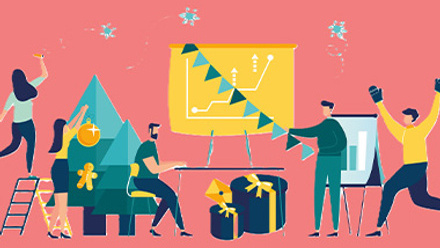6 positives of aligning recognition technology with benefits
Rewards and benefits play a crucial role in elevating the employee experience. But without a culture of recognition, organisations will struggle to sustain positive experiences at scale.
In particular, companies must invest in recognition technologies that support and align with rewards and benefits to consistently deliver highly memorable and meaningful moments.
Recognition technologies make a constant, equitable and large-scale culture of appreciation possible, helping to integrate it into the fabric of an organisation. In fact, when recognition is embedded into a company’s everyday culture, employees are three times more likely to report how it’s a good place to work.
The benefits of recognition technology
By using recognition technologies alongside rewards and benefits, the following are made possible:
1. Leaders frequently recognise good performance – It’s made quick and easy for leaders to consistently highlight individuals’ efforts and results, as well as career high points, which is especially important when teams are working at a distance.
Highlighting the good work that has been recognised, including which of the company’s values the employee has demonstrated, is also simplified using a recognition platform. When a reward is then attached to the recognition moment, the experience is made all the more meaningful and powerful for both the giver and the receiver.
2. Recognition experiences are crafted around the individual - There are multiple ways to craft a recognition experience, with the most effective combining a personalised message with a relevant visual element. These elements hold true regardless of whether the recognition is given in person or via a recognition platform.
Plus, by using recognition technology, leaders can more easily tailor the recognition moment to the individual, giving appreciation in more public or private ways depending on each team member’s preferences.
3. Peer-to-peer recognition is common and frequent - This is an area where recognition technology shines. It makes it extremely easy to convey appreciation to colleagues in different parts of the organisation and even across the world.
And as it can be done in the flow of work, such as via email, the process is streamlined. The best recognition programmes automatically link recognition giving to rewards, perhaps in the form of giving ‘points’ that employees can put towards a reward of their choice.
4. Everyone is recognised fairly – Without recognition technology, it’s hard for organisations to keep track of who has been recognised and why. Often, the high fliers will regularly be rewarded, leaving the quiet grafters unrecognised. Having a record of who is and isn’t being noticed means favouritism is more easily identified and addressed.
5. The organisation recognises both large and small efforts – When elements of the recognition experience can be automated, it enables recognition to be given on a weekly, or even a daily, basis for both small as well as large efforts and results. It’s the regular bite-sized recognition moments rather than the grand, ad hoc celebrations that help to create truly memorable experiences.
6. Recognition is consistently seen throughout the organisation - Socialised recognition takes place in an organisation that has successfully integrated appreciation. The great work taking place across the organisation is regularly highlighted and colleagues’ achievements are frequently celebrated. This is particularly effective in organisations that have connected their recognition platform to the organisation’s intranet so that recognition becomes part of everyday conversations.
Organisations must strive to create a first-rate employee experience. This is only possible when there’s a recognition programme, underpinned by a recognition platform, that provides timely, meaningful and personalised moments for employees to treasure.
Recognition technology is the glue that sticks everything together, providing the meaning and value behind rewards, and with the ability to deliver this on a large scale.
Supplied by REBA Associate Member, O. C. Tanner
Giving teams the integrated tools they need when, where and how they need them.








